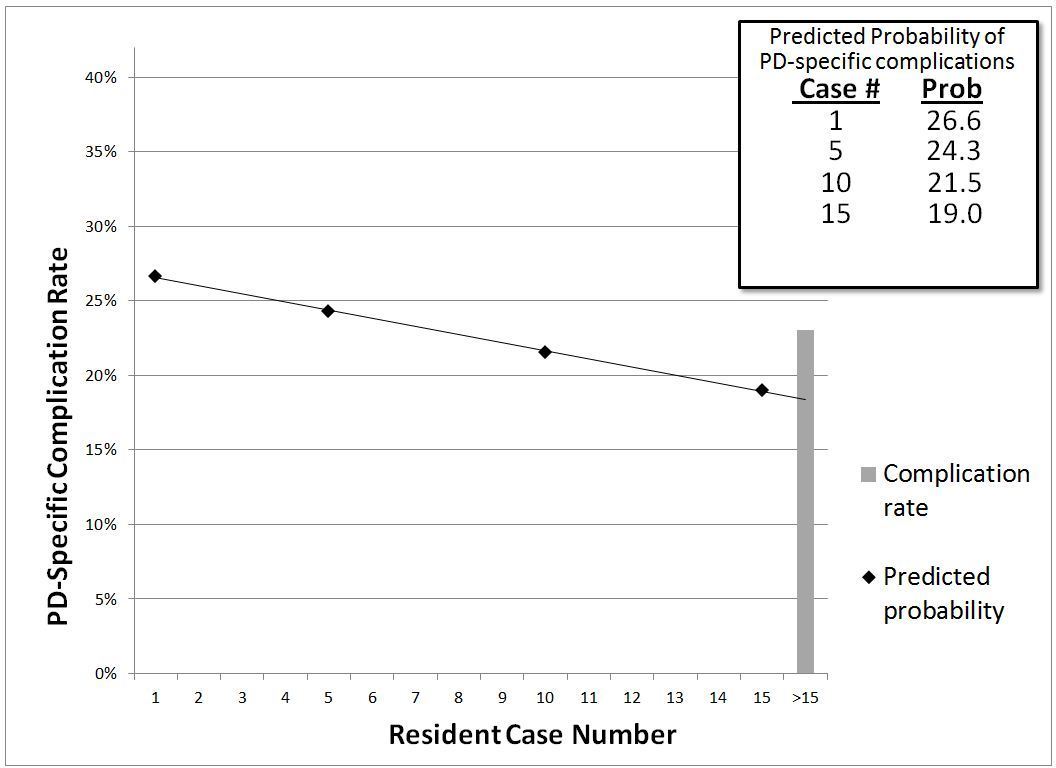|
Back to Annual Meeting Program
Does Resident Experience Affect Outcomes in Complex Abdominal Surgery?
Daniel Relles*1, Richard Burkhart1, Michael J. Pucci1, Jocelyn Sendecki2, Renee Tholey1, Ross E. Drueding1, Patricia K. Sauter1, Eugene P. Kennedy1, Jordan M. Winter1, Harish Lavu1, Charles J. Yeo1
1Surgery, Thomas Jefferson University, Philadelphia, PA; 2Biostatistics, Thomas Jefferson University, Philadelphia, PA
Background: For complex abdominal operations, the influence of provider and hospital volume on surgical outcomes has been described. The impact of resident experience is less well understood.
Methods: We reviewed perioperative outcomes after pancreaticoduodenectomy (PD) at a single high-volume center between 2006 and 2012. Resident participation and outcomes were collected in a prospectively maintained database. Resident experience was defined as post-graduate year (PGY) and number of PDs performed.
Results: Twenty-nine residents and four attending surgeons completed 681 PDs. The overall complication rate was 44%; PD-specific complications (defined as pancreatic fistula, delayed gastric emptying, bile leak, abscess, and wound infection) occurred in 28% and were significantly more common when the first assistant was a PGY 4 rather than a PGY 5 or 6 (44% vs. 27%, p=0.016). Logistic regression demonstrated that as residents perform more cases, PD-specific complications decrease (OR=0.97, p<0.01). For a resident's first case, the predicted probability of a PD-specific complication is 27%; this rate decreases to 19% by case 15 (Figure 1).
Conclusions: We highlight the impact of resident involvement in complex abdominal operations, demonstrating that as residents build experience with PD, patient outcomes improve. This is consistent with volume-outcome relationships for attending physicians and high-volume hospitals. Complex cases provide unparalleled learning opportunities and remain an important component of surgical training. Maximizing resident repetitive exposure to complex surgical procedures benefits both the patient and the trainee.

Back to Annual Meeting Program
|


